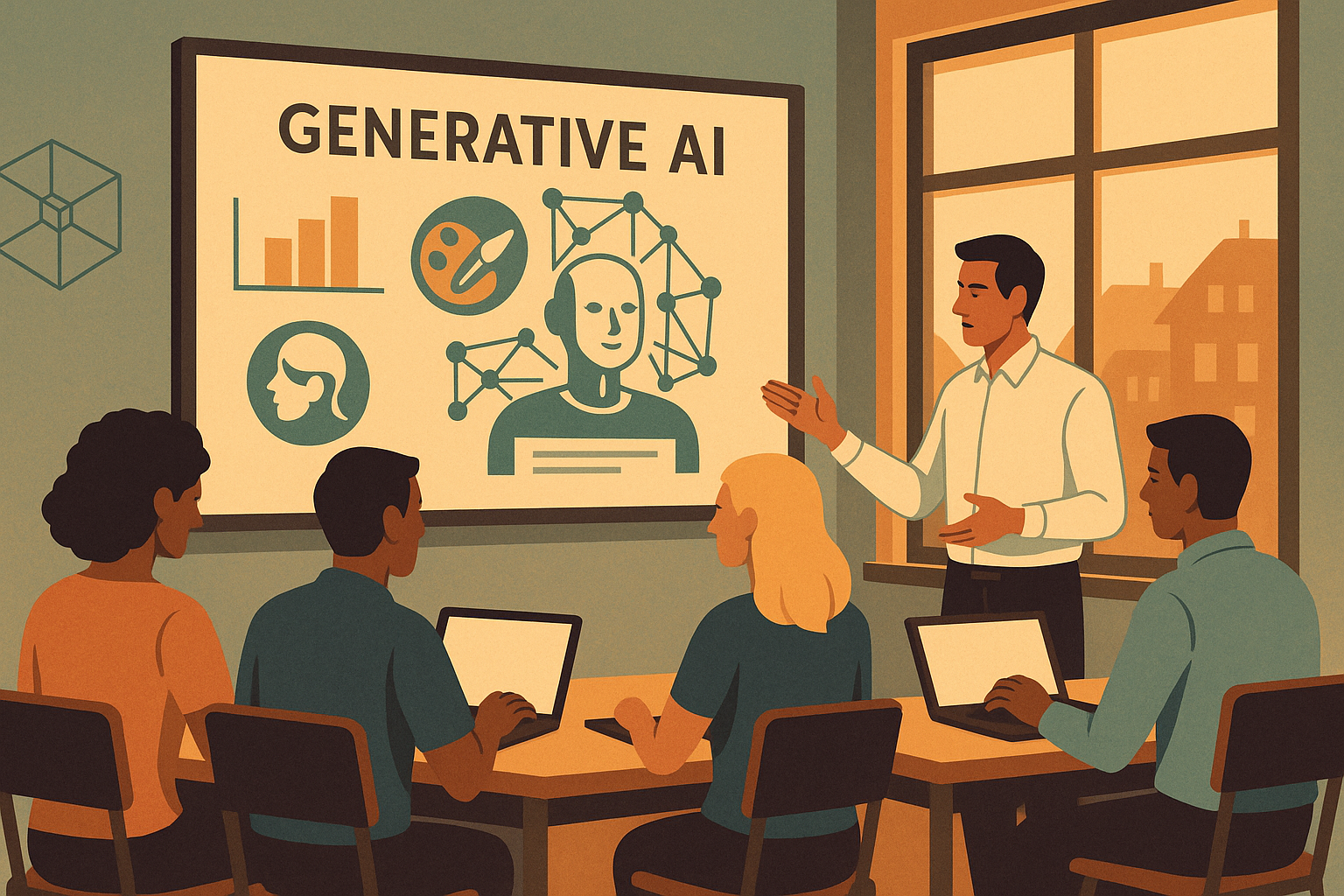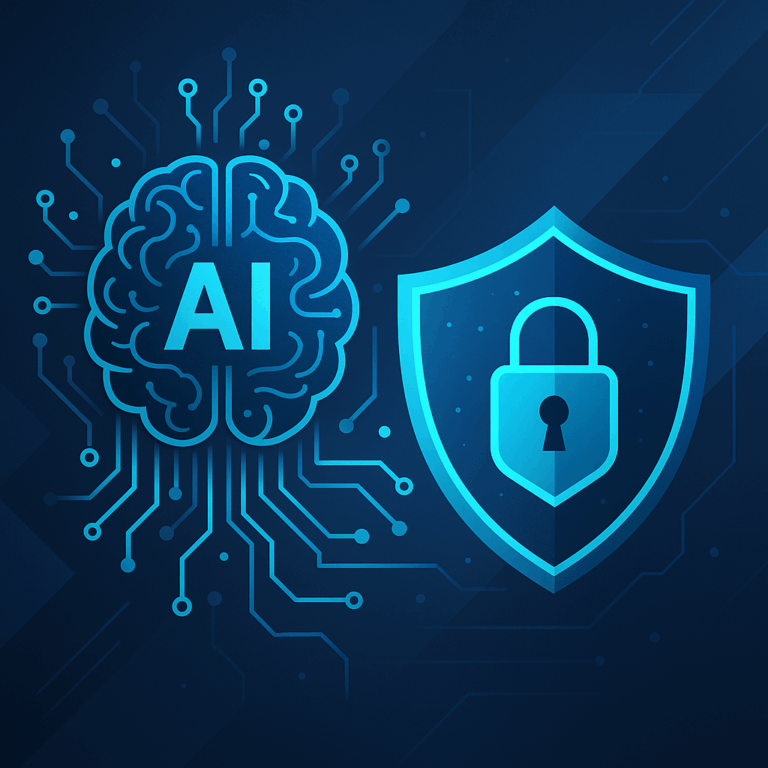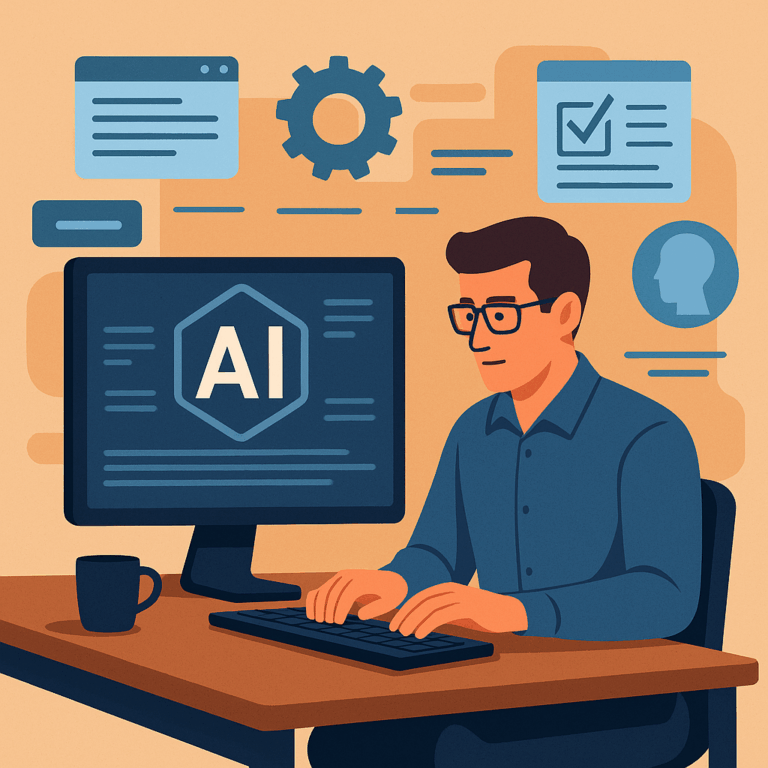From Theory to Practice: How Generative AI is Reshaping Vocational Training in Europe
Generative Artificial Intelligence (AI) is no longer just a theoretical concept taught in computer science classes or discussed in research papers. Across Europe, vocational education and training (VET) providers are beginning to integrate generative AI into their programmes, transforming the way learners acquire skills and the way educators deliver content. This shift marks a decisive move from abstract understanding to hands-on application, with significant implications for Europe’s workforce of tomorrow.
Moving Beyond the Textbook
Traditionally, vocational training has relied on structured curricula, fixed learning materials, and face-to-face instruction. While effective, these methods often lack the flexibility to respond quickly to evolving industry needs. Generative AI changes this dynamic by enabling the creation of adaptive learning resources, interactive simulations, and scenario-based exercises tailored to specific sectors. For example, an automotive engineering student can interact with AI-driven design tools that simulate real-world challenges, while healthcare trainees can practise decision-making with AI-generated patient scenarios.
Empowering Educators and Learners
For educators, generative AI serves as a powerful assistant. It can automate routine tasks, generate teaching content, and provide instant feedback on assignments, freeing up more time for personalised guidance. Learners, in turn, gain access to tools that encourage creativity, experimentation, and problem-solving. Instead of passively absorbing theory, students can actively engage in co-creation with AI systems – testing ideas, refining outputs, and gaining practical experience that mirrors professional environments.
Bridging the Skills Gap
Europe faces a growing demand for digital and AI-related competences, especially in sectors such as manufacturing, logistics, healthcare, and creative industries. Generative AI in vocational training helps address this skills gap by equipping learners not only with technical know-how, but also with the ability to work alongside intelligent systems. This dual skillset (technical proficiency combined with AI collaboration) enhances employability and prepares young professionals for jobs that are rapidly evolving.
Building Trust and Responsibility
Of course, the integration of generative AI also raises important questions of ethics, transparency, and responsibility. Vocational training institutions have a unique opportunity to embed these discussions directly into their programmes, ensuring that future professionals are not only skilled but also aware of the societal and ethical dimensions of AI. This helps create a workforce that is both technologically competent and socially responsible.
Looking Ahead
Generative AI is no longer a future promise – it is already reshaping the way vocational training is designed and delivered. By moving from theory to practice, Europe’s VET sector is taking a bold step towards building a more innovative, adaptable, and resilient workforce. The challenge now lies in scaling these practices, ensuring equal access across regions, and continuing to balance innovation with responsibility.
Further Reading
European insights: adoption of AI in TVET institutions
An UNESCO / UNEVOC brief, exploring how AI is being integrated into Technical and Vocational Education and Training across Europe, discussing challenges, opportunities, and policy recommendations.
atlas.unevoc.unesco.org
Generative artificial intelligence in vocational education and training: A framework for sustainable teacher competence development
Schmitt & Brutzer (2025) propose a model for equipping VET instructors with the competencies to integrate generative AI into teaching—blending theory, ethics, and hands-on practice.
HKSMP
Strategy for artificial intelligence in education and training
A policy document from Cedefop, outlining how EU member states can systematically incorporate AI skills and tools into their educational and training ecosystems.
CEDEFOP







